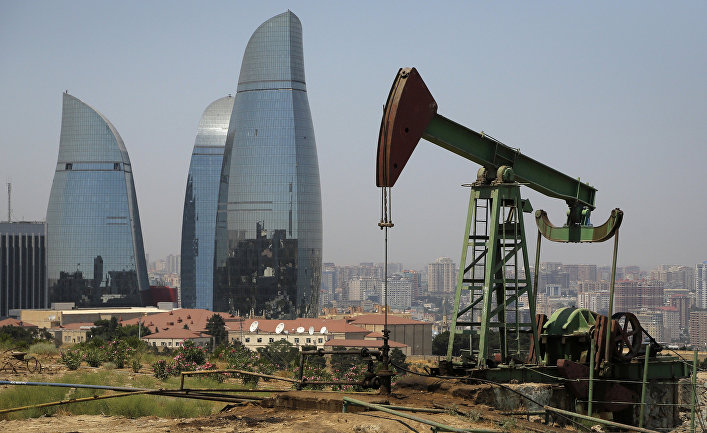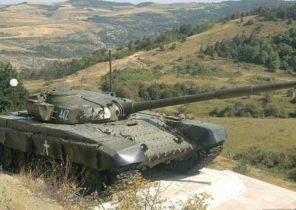
This week, we published a forecast for 2017. In it we predicted that the Russian economy is in for a tough year. Due to the fact that it is very much dependent on oil.
The average price of oil in 2016 amounted to $ 43 per barrel. This is not what it was two years ago when she was two and a half times more. According to the Federal customs service of Russia, revenues from oil exports account for 26 percent of the total export revenue. For economy, where exports account for almost 30 percent of GDP, this is a very significant amount.
This problem manifested itself in a sharp growth of budgetary deficiency of Russia in 2016. In 2015, the budget deficit was $ 25 billion, or 2.6 percent of GDP, as reported by the Russian Ministry of Finance. But in September, the head of the Ministry said that the forecast budget deficit for 2016 revised upwards. By the end of the year it can reach 3.7 percent of GDP.
So Russia gets into your emergency Fund. And it reduces social spending and retirement benefits.
Are estimates
How many “feathers” was broken, how much ink spent on the topic of the rise in oil prices since OPEC on 30 November agreed to cut production! Leave aside the fact that the price of oil jumped up. (The Brent price at the close of business on December 14 was only 11 percent higher than November 28).
Instead speculate on market fluctuations will be very interesting to know what the oil price is significant from the Russian point of view.
The Ministry of Finance said early in the year that the country will have a balanced budget if the oil price will reach $ 82 per barrel. But we don’t trust politicians, and so decided to see if it will work we have the same numbers (or more accurate) if we make calculations of their own.
Russia publishes information on incomes from oil exports in metric tons and in us dollars. According to the Federal customs service of Russia, from January to October 2016, the country exported oil to the total amount of 59.6 billion dollars. It is about 213 million metric tons. Translate metric tons to barrels of oil difficult. Each brand has its own density. The generally accepted conversion factor from metric tons to barrels of 7.33 (this data is from BP statistical review).
After analyzing the data of Russian statistics on exports thus, it is possible to make two conclusions. The first conclusion. In the first 10 months of 2016, Russia has produced oil for nearly five percent more than for the whole of 2016. This means that this year she needed to sell more oil than in the past. The second output. It is estimated that Russia this year will export about of 5.13 million barrels of oil per day.
To go to zero
Now we have to jump to assumptions. Russian statistics shows that in 2015 the country exported oil to 76,7 billion dollars with an average price of 41.85 dollars. Having data only for the first 10 months of the year 2016, we are forced to speculate. But let us assume that in November and December of the current year Russia exported in monetary terms the same as the average for the first 10 months. (In reality, the amount may be slightly more). It turns out that the total amount of Russian oil exports in 2016 will be approximately equal to 71,52 billion dollars.
We also need to take into account recent comments of the Minister of energy of Russia, suggesting that Moscow, even in words, but agreed to coordinate oil production with OPEC in accordance with the agreements on the reduction. In 2017 it will cut production by 300,000 barrels per day. Assuming that this volume will go from medium volume of production, Russia next year will export about 4.8 million barrels per day.
As noted above, the budget deficit in Russia in 2016 should amount to 48.1 billion dollars. If Russian oil export for the year 2016 is estimated at 71,52 billion dollars, so to achieve zero increased budget deficit, Russia needs to export oil to 48.1 billion dollars more. For the price it is roughly $ 68 per barrel, based on the increased daily production of 4.8 million barrels. It’s a little less than the forecasts of Russian Minister of Finance, which he did this year. But nothing unexpected here.
Recently, the Russian State Duma approved the budget for next year. Some figures from it, say, on certain articles of the defense spending, not publicly available. Apparently, the Minister knows some other unknown expenses that need to be considered. Maybe he just wanted to lower expectations.
Too much oil
This means that Russia needs to increase prices by about 30 percent from the current rate. This is just to ensure that the budget was deficit-free. But even such a serious rise in prices will not solve the economic problems of Russia. It simply allows her to maintain the current level of expenditure without incurring in the various reserve funds.
But the cost is already reducing social services. The Russian Ministry of Finance has given the forecast that in 2017 to cover the budget deficit will take all funds from one Fund. Russia expects that this deficit in 2017 will be reduced to three percent of GDP.
At the moment a significant increase in oil prices seems unlikely. The market is overstocked. According to forecasts, leading the world economy at best is waiting for stagnation. And what is more will increase the price, the more they will increase oil production in the United States.
OPEC and other exporters involved in the production cuts will probably be able to make a dent in the oversupply. (This is assuming that they will create a historical precedent and won’t cheat with quotas.) But to solve the problem entirely, they will fail, as will fail to prevent other countries to increase production.
Such market fluctuations can be addictive. We have to think about such things because of their geopolitical significance, and so we need a more strict self-discipline. This logic shows why oil prices should be kept at least 68 dollars a barrel for a long time, and only then begin to rejoice.







